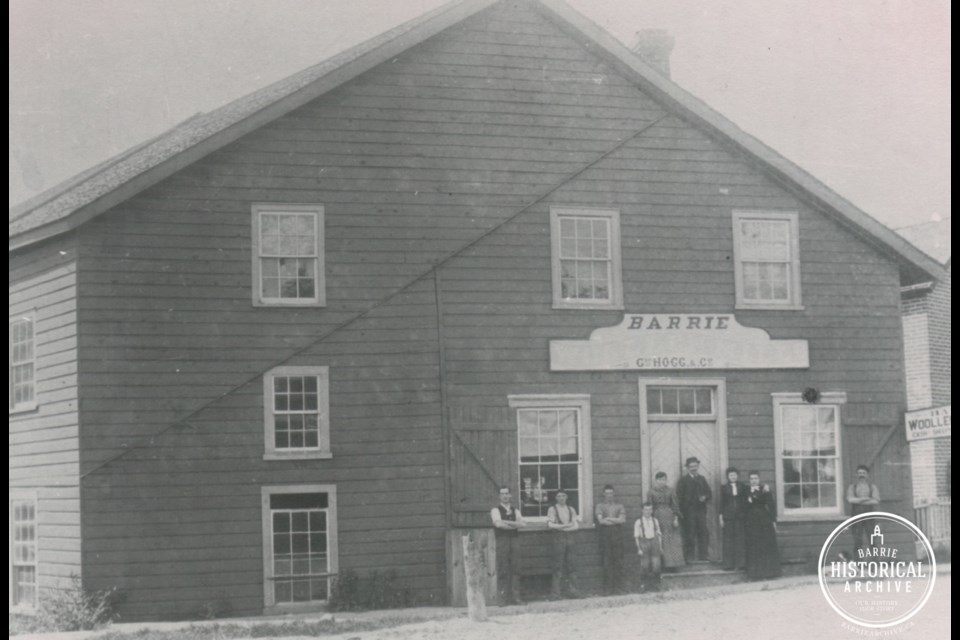This ongoing series from Barrie Historical Archive curator Deb Exel shows old photos from the collection and one from the present day.
McKay Hogg Woollen Mill
Andrew Graham built a tannery and woolen mill on Dunlop Street, east of Poyntz Street, in 1850. His story, and the rise and fall of textiles in Barrie, are captured in Mary Harris’s article ‘Mr. Graham’s Neighbourhood.’
He wasn’t alone in the business. Competition arrived in 1858 when W.F. Seymour opened his Yorkshire Tannery.
Seymour’s business may be related to the Yorkshire Worsted Woollen Mill Company that operated in the former Excelsior Manufacturing plant on Tiffin Street in 1921.
Yorkshire Woollen Mill was one of the industries that the Community Association (later reorganized as the Board of Trade in 1926) had encouraged to relocate to Barrie, but sadly did not survive the 1920s.
There was another competitor.
Andrew McKay opened a mill as well. It burned in 1878 and Mark McKay re-opened the mill as the Barrie Woollen Mill.
One history book says the mill was located on the west side of Bradford Street, just south of Elizabeth Street (later renamed Dunlop Street), however it was likely technically on High Street.
Back in the day, High Street extended from Queen’s Park practically to the bay, and subsequent street numbering shows this section of road with High Street addresses.
However, at one time, that small tract across from today’s Stephan’s Park may have been considered Bradford Street. Check out this 1960s aerial view of the area.
The business was later acquired by George Hogg who made yarns, blankets and sheeting at the McKay Hogg Woolen Mill.
George Hogg had a claim to fame in 1907 when he was a skip on one of two Barrie rinks to bring home curling's Ontario Tankard.
The small collection of homes and businesses that had resided on this little block have since been demolished in preparation for some big development.



